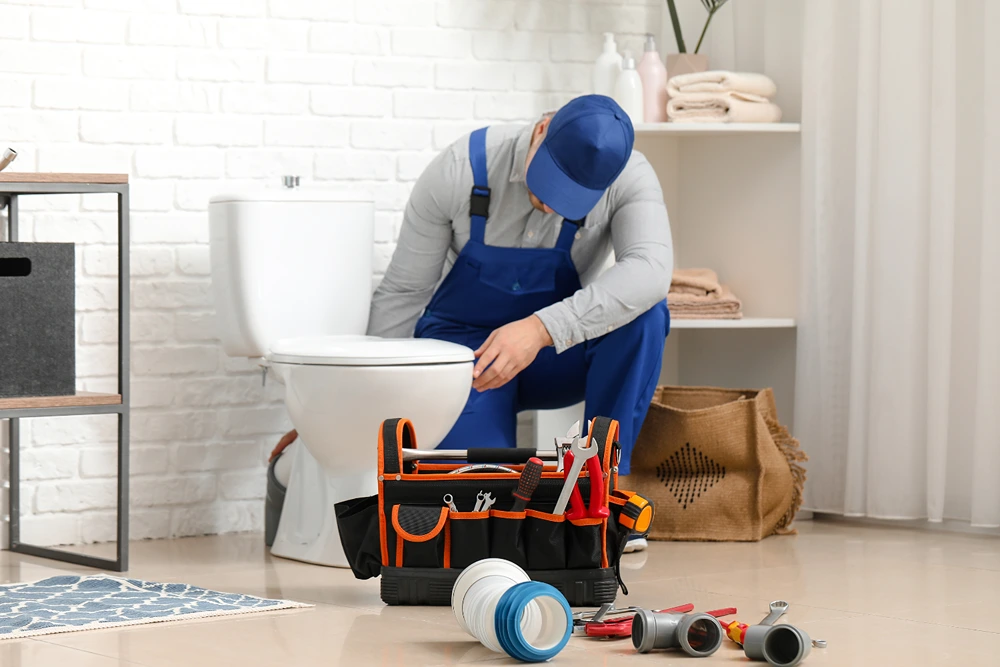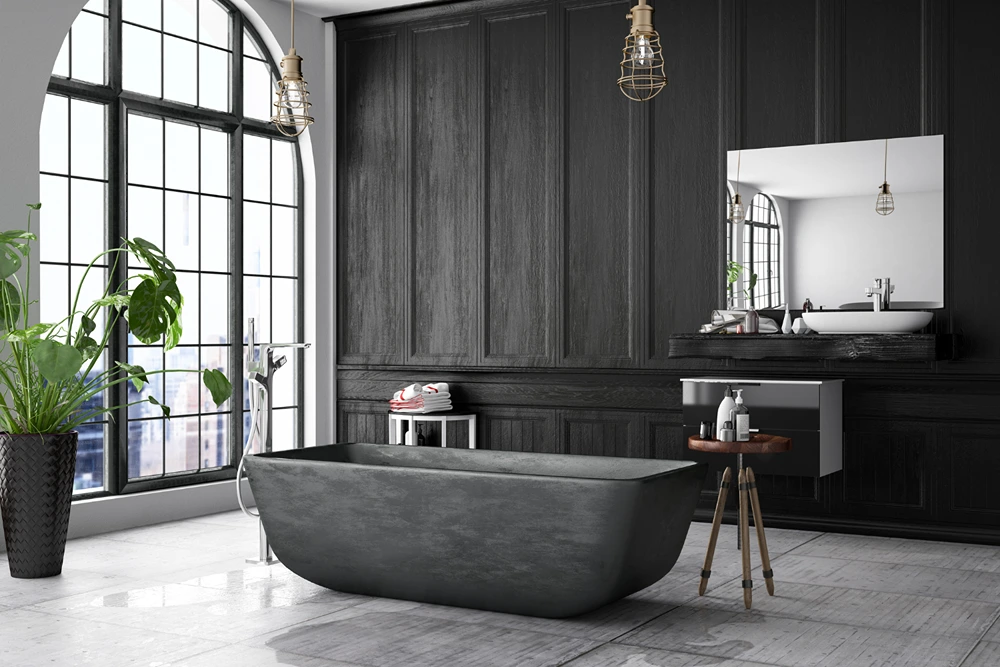Ever wondered what really goes on during a bathroom installation? Whether you’re remodelling or building from scratch, understanding the process can save you time, money, and headaches. From meticulous planning and accurate measurements to electrical work and the installation of fixtures, knowing what to expect is crucial for a smooth project. This guide will walk you through every stage, ensuring you’re well-prepared for the transformation ahead. Get ready to turn your bathroom vision into reality with expert insights and practical tips.
Planning Your Bathroom Installation
Proper planning and visualisation are essential for a successful new bathroom installation in Glasgow. Effective planning ensures that the space is utilised efficiently, meeting both functional and aesthetic requirements. Early planning helps identify potential issues, allowing for adjustments before the installation process begins. This proactive approach reduces the likelihood of costly mistakes and delays.
Accurate bathroom measurements are crucial for constructing a realistic design. Measuring the bathroom space includes noting the dimensions of the walls, floor, and any existing fixtures. These measurements form the basis for the layout, determining the placement of the bath, shower, sink, and toilet. A detailed layout plan helps ensure that all fixtures fit correctly and that there is adequate space for movement.
6 key considerations when planning a bathroom layout:
- Fixture placement
- Adequate spacing
- Functional design
- Aesthetic appeal
- Future-proofing
- Compliance with regulations
Reviewing and finalising the design is the last step in planning. This involves checking the layout for practicality and ensuring all design elements are coherent. It is also important to consider future needs and ensure compliance with local building regulations. Finalising the design with these considerations in mind ensures a seamless installation process and a bathroom that meets long-term requirements.
Pre-Installation Preparation
Clearing the bathroom area is the first step in preparing for a bathroom installation. This involves removing all personal items, such as toiletries, towels, and decorations. The aim is to create an unobstructed workspace for the installation team. Clearing the area also helps to protect your belongings from potential damage. It’s advisable to cover any furniture and flooring in adjacent rooms to minimise dust and debris spread during the demolition phase.
Obtaining necessary permits is a crucial part of the preparation process. These permits ensure that the installation complies with local building regulations, which often include plumbing and electrical codes. Failing to secure the required permits can lead to legal complications and potentially costly fines. It’s essential to check with your local council or a professional contractor to understand the specific permits needed for your project.
5 steps involved in the bathroom demolition process:
- Disconnecting utilities
- Removing old fixtures
- Stripping tiles and flooring
- Disposing of debris
- Preparing walls and floors for new installations
Protecting adjacent rooms from dust and debris is another vital step. This can be achieved by sealing off the bathroom entrance with plastic sheeting and using protective coverings on floors and furniture. Additionally, proper ventilation should be ensured to remove dust particles from the air. Taking these precautions can significantly reduce the amount of cleaning required after the demolition and installation are complete.
Plumbing and Electrical Work

Plumbing considerations are a vital part of any bathroom installation. This includes rerouting pipes to accommodate new fixtures such as sinks, toilets, and showers. Ensuring leak-proof connections is essential to prevent water damage and maintain the integrity of the bathroom. Properly rerouted and well-sealed plumbing lines guarantee efficient water flow and drainage, which are critical for the bathroom’s functionality.
Electrical work in the bathroom involves installing new wiring, outlets, and lighting fixtures. Compliance with safety standards is crucial, especially given the wet environment. Electrical safety in bathrooms requires using ground fault circuit interrupters (GFCIs) and ensuring that all wiring is adequately insulated and protected from moisture. Properly installed electrical systems enhance safety and functionality, allowing for features like heated floors and illuminated mirrors.
| Task | Description
|
| Rerouting plumbing lines | Adjusting pipe locations to fit new fixtures |
| Ensuring leak-proof connections | Sealing all joints and connections to prevent water leaks |
| Installing new wiring | Laying out electrical lines for outlets and fixtures |
| Compliance with safety standards | Adhering to electrical codes and using GFCIs for protection |
| Installing outlets and switches | Adding necessary electrical points for appliances and lighting |
| Testing and inspection | Verifying that all systems function correctly and safely |
| Hiring qualified professionals for plumbing and electrical work is essential to avoid potential issues. Experts ensure that all installations meet local building codes and safety standards. This reduces the risk of future problems such as leaks or electrical faults, providing peace of mind and ensuring the longevity of the bathroom. Qualified professionals bring expertise and precision, ensuring a smooth and efficient installation process. | |
Installing Bathroom Fixtures and Fittings
Precise installation of bathroom fixtures is paramount to ensure both functionality and durability. Each fixture, whether it’s a bath, shower, sink, or toilet, must be installed correctly to avoid issues such as leaks or improper drainage. Proper installation not only guarantees efficient operation but also extends the lifespan of the fixtures, reducing the need for frequent repairs or replacements. Moreover, a well-executed installation enhances the overall aesthetic of the bathroom, providing a clean and professional finish.
The variety of fixtures and features available allows for customisation to meet specific needs and preferences. Standard installations typically include the bath, shower, sink, and toilet, but additional features like heated towel rails or underfloor heating can be integrated for added comfort. Each of these fixtures comes with its own set of installation requirements, making it essential to follow specific guidelines and manufacturer instructions. This ensures that all components are installed correctly, safely, and in accordance with local regulations.
7 steps for installing bathroom fixtures:
- Positioning the fixture
- Securing the base or mounting
- Connecting plumbing
- Installing additional features (if any)
- Testing for leaks and functionality
- Sealing joints and edges
- Final adjustments and finishing touches
Following guidelines and manufacturer instructions is critical for proper installation. These instructions provide detailed steps and safety measures that must be adhered to, ensuring that the fixtures are installed securely and function as intended. Ignoring these guidelines can lead to installation errors, safety hazards, and voided warranties. By meticulously following the prescribed steps, one can achieve a high-quality, long-lasting bathroom installation that meets all functional and aesthetic expectations.
Tiling and Flooring
Professional installation of tiling and flooring in a bathroom is crucial for ensuring durability and longevity. Expert installers have the skills and knowledge to lay tiles and flooring materials in a way that prevents leaks and withstands daily wear and tear. Properly installed tiles and floors not only enhance the aesthetic appeal of the bathroom but also contribute to its functionality and ease of maintenance. By entrusting the installation to professionals, one can achieve a high-quality finish that endures over time.
When choosing materials for bathroom tiling and flooring, several options are available, each with its own set of benefits. Common choices include ceramic tiles, known for their affordability and ease of maintenance; porcelain tiles, which are more durable and water-resistant; natural stone, offering a luxurious and unique appearance; and vinyl flooring, which is both cost-effective and simple to install. Selecting the right material is essential for balancing aesthetics, functionality, and budget.
5 factors to consider when choosing bathroom tiles and flooring:
- Material durability
- Water resistance
- Maintenance requirements
- Aesthetic appeal
- Cost
Ensuring proper installation of tiles and flooring is a critical step in the bathroom installation process. This involves meticulous preparation of the surface, precise cutting and fitting of materials, and the use of appropriate adhesives and grouts. Proper installation not only prevents issues like water leakage and uneven surfaces but also ensures that the flooring and tiling remain intact and visually appealing for years to come. Investing in quality installation maximises the lifespan and functionality of the bathroom.
Finalising and Inspecting Your New Bathroom

The final inspection of a newly installed bathroom is crucial to ensure every component is correctly installed and functioning as intended. This process involves a thorough check of all plumbing and electrical systems, verifying that fixtures are securely fitted, and ensuring there are no leaks or faults. The inspection also includes testing all installed features such as taps, showers, and lighting to confirm they are operating efficiently. Addressing any identified issues promptly during this stage guarantees that the bathroom is safe and ready for use.
4 tasks involved in post-installation cleaning:
- Removing debris and dust
- Cleaning fixtures and tiles
- Checking for any remaining issues
- Preparing the bathroom for use
Warranties and guarantees are essential elements that provide peace of mind and protection against defects. These assurances cover various aspects of the installation, including the workmanship and the fixtures themselves. Having warranties in place means that any potential problems encountered after the installation can be rectified at no additional cost, ensuring long-term satisfaction and reliability. By securing comprehensive warranties, homeowners can confidently enjoy their new bathroom, knowing they are safeguarded against unforeseen issues.
Final Words
Proper planning and visualisation set the stage for a successful bathroom installation. Accurate measurements and layout considerations ensure that the design is both functional and aesthetic.
Pre-installation preparation, including obtaining permits and safely demolishing the existing bathroom, is essential. Plumbing and electrical work must be handled by qualified professionals to ensure safety and reliability.
Installing bathroom fixtures requires precision and adherence to guidelines, while professional tiling and flooring guarantee durability and water resistance. The final inspection and cleaning stage prepare the bathroom for use, with warranties providing peace of mind.
Understanding what to expect during a bathroom installation can make the process smoother and more efficient, resulting in a functional and beautiful space.

A researcher in theology and law, Thomas analyses religious freedoms, secular governance, and the impact of faith on social policies.

